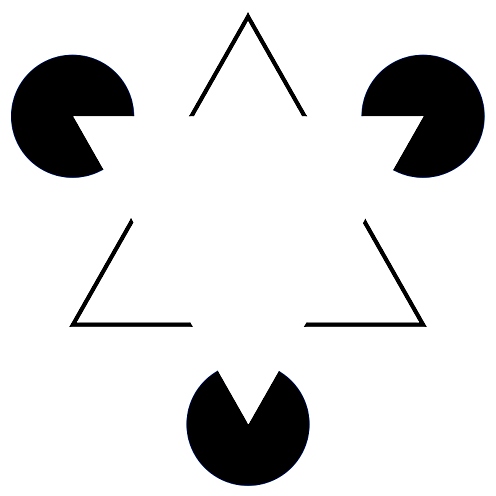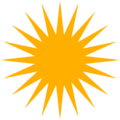Home › Forums › Time Space Knowledge › A Sense of Knowing
Tagged: knowing, perception, time's elasticity
- This topic has 0 replies, 1 voice, and was last updated 12/18/2022 at 11:34 AM by David Filippone.
-
AuthorPosts
-
-
December 18, 2022 at 11:34 am #1127

Image: From Infinite Folds and Wild Knots by Bruce Alderman – Liminal Art Prints
https://www.facebook.com/photo?fbid=113373404946390&set=pcb.113373858279678
The following posts from quite a while ago were my practice notes resulting from calmly inquiring into some specific acts of perception. I was curious ‘how’ sometimes I saw what I did not intend from moment to moment. While I ordinarily assume ‘I’ control what I see and mean, actually I often do not. It’s fascinating to me how my perceptual process evolves from second to second. While I embody time and change, and feel bound by the momentum, paradoxically there are profound intervals that seem unbounded. Here’s an interesting quote from the ‘Searcher…’ books by Richard Dixey:
“When we are fully engaged we do not experience the passage of time. Our ordinary experience of time is linear, a seeming forward momentum and movement. Clock time is a mechanical tracking of this movement. Our identity is contingent on linear time because it requires the projection of a present moment in which names and concepts, the building blocks of our narrative, can arise. This projection requires points of reference, both a spatial location and a time marker, the key elements in the making of remembered experience. But once we are fully engaged there is just experience; there’s no geotag marking space and time [by recognizing and naming]. Past, present and future are no longer useful metrics by which to access our experience. Events simply manifest in ever expanding displays. You could say they are unfolding ‘in time’, but time is elastic. As we become attuned to experience and fully engage directly with it, clock time simply stops. Unable to sustain its accustomed construction of time, the mind’s regime relaxes its grip.”
….‘Searcher Reaches Land’s Limits, Volume II,’ by Richard Dixey, Chap. 67, p. 311, [Emphasis added]
In light of the above, my experience of present and past simultaneous unfolding described below was curious.

Image: Waves’ by dimitrisvetsikas1969 / 8637 – Pixabay
https://tinyurl.com/ya72w3ujKnowledge aspect of Establishing Activity of Sensing
From my porch, I’m looking out over a field of very tall grass; windblown uncut that is roiling green. At the edge, the farmer cut a wide path. He will return and cut the rest at some point, but now the path lies flat and golden in the sun, like a beach at the edge of a sea of green. The blustering wind in the leaves overhead sound like waves, and my vision of a green sea seems to cause an internal shift… a bubble pops… and I’m a young man again, sitting on the porch steps of a beach house in Cape May, sipping morning coffee, smelling salt air, seeing/hearing the ocean waves crashing on the beach fifty yards away… the sun and coffee warm, the moment vast.
This is a description of a moment that I jotted down after the fact. As a description its meaning moves through time as a story-line in linear time. There is more I could have included in the telling, such as how I felt, what was seen while looking at my sun-tanned arms and muscular legs, the feel of the coffee mug, the seagulls calling, the dominance of blue, and so much more. All the senses were in play in the present as they were with the memory. And linear time just opened… The interesting thing was the relatedness of the two porches, the two seas, the two warm and vast experiences, the present and a memory overlapping, like receding surf on shifting sand…
A day has passed, the view changed, the world turns and moves on. I’ve returned to looking out over the field, but the farmer has cut and bailed the hay. The field is different yet the same. The ‘knowing aspect‘’ during the practice seemed to allow boundaries between past and present to shift and merge, identities became transparent, two moments separated by decades, united within a sense of intimacy in the vital and alive presenting.
– – – – – – –
The next practice-note [from quite a while ago] involved looking into an optical illusion, and watching calmly how subliminal mind attempts to frame meaning, before ‘I’ as a subject [separate from the object-image], had yet to appear in order to assert control of the meaning making process.

Image: Kanizsa’s Triangle Illusion – Wikipedia
THINKING THROUGH PERCEPTION
Thinking involves many different mental processes. For instance, perceiving visually I most often take for granted that when I see something, it’s a fact. BUT if I take the time to investigate what I THINK I saw, I am astounded at how ‘inaccurate’ I actually am. Take the Kanizsa Triangle Illusion pictured here, as an example of how, in the instant of perception an impression is reflected, and then I look for what is familiar about it in an effort to make sense of what I see.
I almost immediately conclude that there are circles and triangles pictured in black and white. But actually, there are no circles or triangle there rather, they are suggested by spatially separate fragments that give the impression of a bright white triangle, and possibly others, defined by sharp illusory contours, three occluding black circles, and a black-outlined triangle, NO CIRCLES OR TRIANGLE ON THE PAGE. They are simply suggested, as my mind fills in what is NOT there. In fact, in order to describe what is happening I use the words ‘triangle’ and ‘circles’, as if positing that they ARE there, despite what I’m saying to the contrary.
‘Perception’ points to a lightning-fast process, visually or through the other senses. Rinpoche’s books often invite us to explore ‘how’ we perceive, that we should really inquire if we really ‘see’ what is there; or are we perhaps ‘skimming over’ referring interactions between the subject who is perceiving, and what the subject takes to be an object… a process in time we seem compelled to engage in, just to make the object meaningful.
It’s quite interesting to observe the process of perception in each of our senses, to understand how an initial stimulation is interpreted and identified. In ‘Knowledge of Time and Space’, p. 392, Rinpoche writes regarding our sensing fields that establish our reality, “within their activity of establishing, original intimacy remains open for discovery and appreciation.”
So, as I continuously try to get my stories straight; what I narrate to myself, what I perceive as the way things are; I seem often to confuse or conflate the things that I encounter with the symbolic meanings and descriptions I assign to them. This just seems like my normal human perceptual process; as if the map were actually the territory it symbolizes. Perhaps it has to do with encountering a background ‘some-thing’, and then automatically and simultaneously, the intrinsic activity of perception is happening. It reminds me of water cascading over a precipice; at some point something coheres or pools together, and I declare, “That’s it! That frilly, stringy, waving, flickering thing in the breeze I’ve encountered is a certain type of TREE. Naming creates the mind-thing, tagged in time, filed in memory for later reference.
It seems important to observe this happening. And I’ve gradually noticed I seem less obligated to identify with my idea of the thing. I effectively counter the tendency to confuse the thing with my thoughts ABOUT the thing…the names, and images I remember. The gravity or weightiness I might ascribe to my story, that which infuses my thought-rushing, my minding, more space is introduced, more background and foreground is allowed. A more open atmosphere seems available as my focus opens, and I’m at ease and less likely to be emotionally carried away or misdirected. What a curious and fascinating process to observe.
-
-
AuthorPosts
- You must be logged in to reply to this topic.
